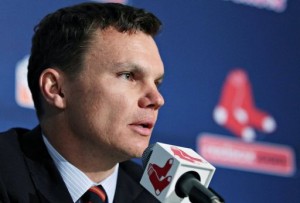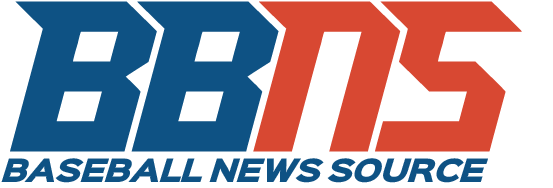 It was the trade deadline in 1990, and the Boston Red Sox were battling for the American League East title. Hoping to bolster their bullpen, the Sox acquired 37-year-old right-hander Larry Andersen for a promising prospect named Jeff Bagwell.
It was the trade deadline in 1990, and the Boston Red Sox were battling for the American League East title. Hoping to bolster their bullpen, the Sox acquired 37-year-old right-hander Larry Andersen for a promising prospect named Jeff Bagwell.
At the time, Bagwell was playing third base at Double-A New Britain, where he batted .333 that season with just four home runs. Andersen, who had posted a 1.95 ERA and recorded six saves for the Astros, did help Boston win the AL East crown. He had a 1.23 ERA in 15 games.
Yet the Red Sox were swept in four games by the powerful Oakland A’s, a series that saw Boston score just one run in each game.
The moral of this story? Before making a trade, general manager beware. Before trading top prospects, ask yourself, “Are we true contenders, and if so, is it worth it?”
The A’s finished 103-59 that season and were heavy favorites to win it all, though they were swept by the Cinderella Cincinnati Reds in the World Series. With or without the acquisition of a set-up man like Andersen, the Red Sox had little chance to upset the A’s.
General manager Lou Gorman’s decision to trade Bagwell (who was considered a top prospect at the time) prevented the team from having an eventual lineup featuring Mo Vaughn, Nomar Garciaparra and Bagwell.
Again, Are we true contenders, and if so, is it worth it
Fast forward to today. Reeling from being swept in a three-game series at Fenway Park by Toronto, the Red Sox are 48-48 and mired in the American League basement, 9.5 games behind the Yankees. Though they are just 3.5 games in back of Baltimore for the second wild card spot, first-year general manager Ben Cherington must ask himself the same question. “Are we true contenders, and if so, is it worth it?”
The Red Sox desperately need a reliable, top of the rotation caliber arm. Matt Garza is a possibility, though the Cubs right-hander left his last start over the weekend with right forearm soreness. On Monday, the Red Sox were said to be interested in Miami’s Josh Johnson, according to ESPNBoston.com. Those pitchers would require the departure of a top prospect or two.
It is believed that Jackie Bradley (Boston’s center fielder of the near future if Jacoby Ellsbury is not retained long term), Matt Barnes (a right-handed starting pitcher who projects as a No. 2 arm in the majors), Xander Bogaerts (who has been called Hanley Ramirez without the attitude problems) and Blake Swihart (a catcher who some scouts compare to San Francisco’s Buster Posey) are the lone untouchables in the organization’s well-stocked farm system.
Would the Red Sox trade promising catcher Ryan Lavarnway, shortstop phenom Jose Iglesias, highly regarded right-handed starter Anthony Ranaudo and/or 24-year-old outfielder Ryan Kalish?
If any of these prospects – all of whom are expected to help the Red Sox in the next season or two if they are not dealt – are packaged for a difference-making starting pitcher, would it be a repeat of 1990?
At this point, almost 100 games into the season, the Red Sox don’t appear to be a legitimate World Series contender. They lead the American League in runs, but their starting pitching is putrid, mostly because Jon Lester and Josh Beckett are expected to be top of the rotation arms but their numbers reflect mediocre No. 5s.
Before bowing to pressure and landing a starting pitcher, Cherington should ask himself if he thinks this team is capable of beating a team like the Yankees, Rangers or Angels in a playoff series.
Anything can happen in the one-game wild card game, but winning a series requires reliable starting pitching, of which the Red Sox have little.
Since it is doubtful that Lester or Beckett can regain their dominant stuff that made them top of the rotation arms, Boston is not one starting pitcher away from building a rotation worthy of late October aspirations. With that in mind, it would be better to keep the prospects, even call a few up (Lavarnway, Iglesias and Kalish) and focus on building a deep rotation for 2013.
Boston is not Pittsburgh, nor is it Baltimore. Solely making the playoffs is not acceptable. Nothing short of a deep run into the American League Championship Series is expected year in and year out.
That is not feasible, of course, but it should factor into Cherington’s trade deadline decisions.
Because of the woeful condition of the starting rotation, getting an arm just to get the second wild card spot is not worth the potential long-term implications of sacrificing prospects.
